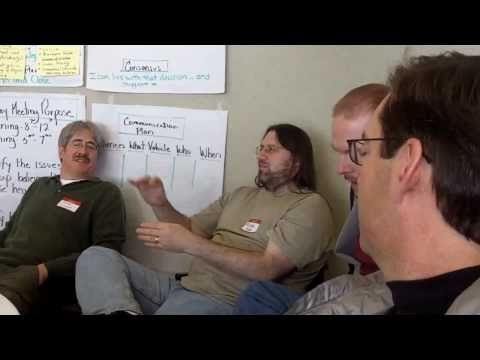Communication for Agile project management and Scrum software development teams.
This article focuses on the obstacles to using Agile in a distributed team environment and recommends how to counter them with what is called “de-Agile.” De-Agile is tailoring Agile to fit your team by taking out processes that don’t make sense and tweaking those that need to be modified to suit your needs. In a distributed team environment, de-Agile is mostly about removing the sense of being distributed. You need to educate each team member about the additional communication responsibilities required when working with remote team members and emphasize the importance of being open and available.
The Dialogue Sheet is a new technique for team retrospectives in Scrum Projects. This technique involves a large sheet of paper that help to create good discussion and teamwork in Agile and Scrum projects.
This article examines something called “The Daily Scrum Meeting” used by Scrum Teams on Agile Software Development Projects around the world. Using some real-life stories and cartoons, you should walk away from this with a better understanding of what not to do, what to do, and then how you can make changes if the first team looks more like what your Scrum Team is doing today.
Continuous feedback is part of basic principles of Agile project management, using techniques such as Test Driven Development (TDD), Continuous integration or daily stand-ups meetings that allow the Scrum team to share concerns about potential challenges as well as coordinate efforts to resolve difficult and/or time-consuming issues.
In this blog post, Michael Sahota explains the basic principles of NonViolent Communication (NVC) and how they can help your to improve communication in your Scrum team. Nonviolent communication (also called compassionate communication) is a communication process that often functions as a conflict resolution process. It focuses on two aspects of communication: honest self-expression and empathy. This communication is very close to the concepts developed in the Core Protocols.
This article explores some of the principles of agile interactions of Scrum teams. More specifically, it focuses on those interactions necessary to discovering and elaborating requirements within the context of the Scrum framework.
This video shows a discussion on how agile techniques rebuild trust between IT and business at the 10 Years of the Agile Manifesto conference.





